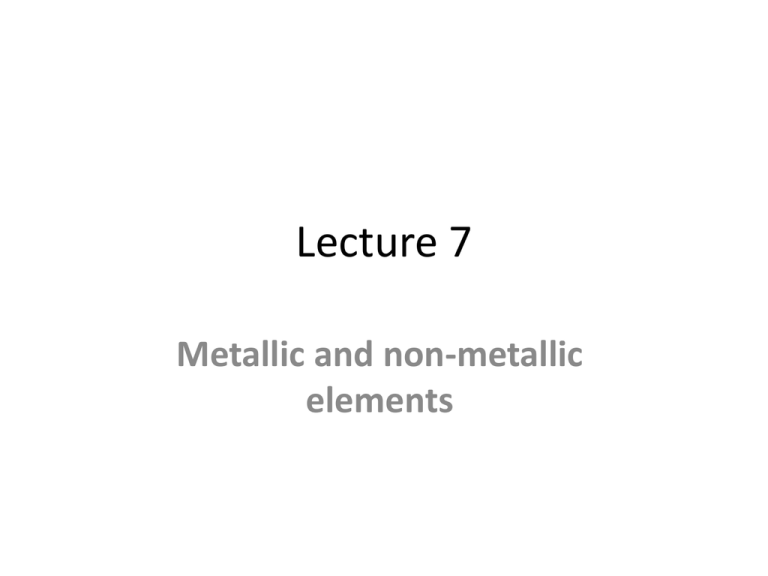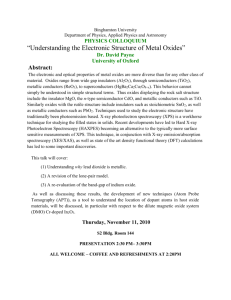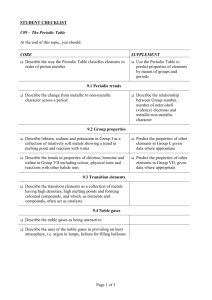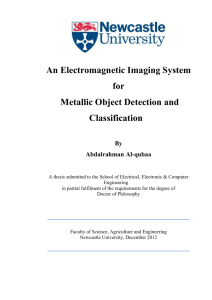Lecture 7 Metallic and non-metallic elements
advertisement

Lecture 7 Metallic and non-metallic elements - Metallic elements form solids that are good conductors of electricity, and have structures . Non-metallic elements form molecules or covalent solids, which are generally poor conductors of electricity . All elements of the s, d and f blocks are metallic (except hydrogen), non-metallic ones being confined to hydrogen and to the upper right-hand part of the p block Different types of chemical behavior are associated with the two kinds of element. . • Typical metallic elements are good reducing agents (for example, reacting with water to produce dihydrogen) and form hydrated cations in aqueous solution (Na+, Mg2+, etc.). They have solid halides and oxides. The oxides are basic and either react with water to produce hydroxide ions (OH−) or, if insoluble under neutral conditions, dissolve in acidic solutions. Their hydrides are solids with some ionic (H−) character. Typical non-metallic elements form ionic compounds with electropositive metals. They form anions in water, either monatomic (e.g. Cl−) or oxoanions (e.g. NO3−, ). Their oxides are either molecular or polymeric covalent in structure, and are acidic, reacting with water (as do halides) to produce oxoacids (H2CO3,H2So4, etc Periodic table showing metallic and (heavily shaded) non-metallic elements . A metalloid is a chemical element with properties that are in-between or a mixture of those of metals and nonmetals, and which is considered to be difficult to classify y as either a metal or a nonmetal. The six elements commonly recognized as metalloids are boron, silicon, germanium, arsenic, antimony and tellurium. They are metallic-looking brittle solids, with intermediate to relatively good electrical conductivities, and each having the electronic band structure of either a semiconductor or a semimetal. Chemically, they mostly behave as (weak) nonmetals, have intermediate ionization energy and electronegativity values, and form amphoteric or weakly acidic oxides. The electrical properties of silicon and germanium, in particular, enabled the establishment of the semiconductor industry in the 1950s and the development of solid state electronics.





